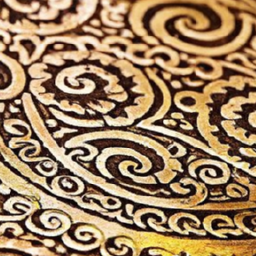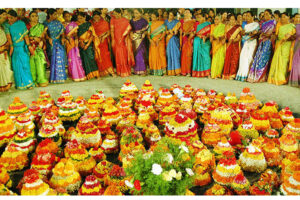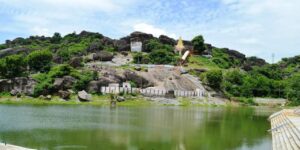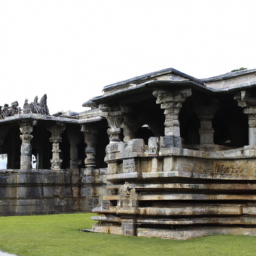Culture And Traditions Of Warangal

Hey there! Have you ever wondered about the culture and traditions of Warangal? Well, you’re in for a treat! In this article, we’re going to dive into the fascinating world of Warangal’s rich cultural heritage and age-old traditions. Get ready to learn about their art, music, dance, festivals, and so much more. Trust me, you won’t want to miss out on this colorful journey through Warangal’s vibrant cultural tapestry.
We’ll delve into the intricate details of Warangal’s famous art forms like Kakatiya Kala Thoranam and Pochampally Ikat. Speaking of art, we’ll also explore the stunning architecture of Warangal Fort and Thousand Pillar Temple. You’ll discover the rhythmic beats of the region through their traditional dances like Perini Shivatandavam and Kolattam. And let’s not forget about the captivating festivals of Warangal, such as Sammakka Saralamma Jatara and Batukamma. By the time you finish reading, you’ll have a newfound appreciation for this enchanting city and its vibrant cultural traditions. So, buckle up and get ready to embark on a cultural journey like no other!
Warangal, a historic city in the state of Telangana, India, is known for its rich culture and traditions. Over the years, Warangal has witnessed the blending of different religions, art forms, cuisines, and languages, making it a melting pot of diverse cultural experiences. In this article, we will delve into the history, geography, religious beliefs and practices, art and architecture, traditional cuisine, performing arts, occupations and handicrafts, costumes and ornaments, language and literature, as well as sports and recreation in Warangal. Let’s explore the vibrant culture and traditions that make this city so unique.
History of Warangal
Warangal has a long and illustrious history, dating back to the 12th century. It was ruled by the Kakatiya dynasty, who made significant contributions to the city’s architecture and is known for building the iconic Warangal Fort. The fort stands as a testament to the grandeur and splendor of the Kakatiya empire. With its intricate carvings and imposing structure, the fort remains a popular tourist attraction to this day.
Geography of Warangal
Situated in the Deccan Plateau, Warangal boasts a picturesque landscape with hills, valleys, lakes, and fertile plains. The city is surrounded by the Warangal Urban and Rural districts and is known for its agricultural productivity. With its favorable climate and abundance of natural resources, Warangal has been an important center for trade and commerce.
Religious Beliefs and Practices
Warangal is a city that embraces religious diversity. The major religions practiced in Warangal include Hinduism, Islam, and Christianity. Each religious community contributes to the cultural fabric of the city, with their unique festivals and rituals.
Major religions in Warangal
Hinduism is the dominant religion in Warangal, with numerous temples dedicated to various gods and goddesses. The Bhadrakali Temple, Thousand Pillar Temple, and Ramappa Temple are particularly famous for their architectural beauty and spiritual significance. Muslims form a substantial part of the population and celebrate festivals such as Eid-ul-Fitr and Eid-ul-Adha with great fervor. Christians, too, have a strong presence in Warangal and celebrate Christmas and Easter with joy and enthusiasm.
Religious festivals and rituals
Warangal is known for its vibrant religious festivals that bring communities together. During Ganesh Chaturthi, the city is adorned with beautiful idols of Lord Ganesha, and people participate in processions and perform traditional dances. Diwali, the festival of lights, is celebrated with great enthusiasm, with people lighting up their homes and bursting fireworks. The Bonalu festival, dedicated to the goddess Mahakali, is another important festival in Warangal, with colorful processions and devotional rituals.
Art and Architecture
The art and architecture of Warangal reflect the city’s rich history and cultural heritage. The Warangal Fort, built by the Kakatiya dynasty, is a magnificent structure with intricate carvings and beautiful arches. The Thousand Pillar Temple is another architectural marvel, known for its exquisite details and sculptural craftsmanship.
Warangal Fort
The Warangal Fort is a must-visit for history enthusiasts. The fort has four ornamental gates, each adorned with beautiful sculptures and carvings. Inside the fort, you can explore the ruins of several temples and shrines. The Thousand Pillar Temple, located within the fort premises, is a stunning example of the intricate Kakatiya architecture.
Temples and Monuments
Warangal is home to several temples and monuments that showcase the city’s architectural brilliance. The Ramappa Temple, a UNESCO World Heritage Site, is an architectural masterpiece. Dedicated to Lord Shiva, the temple is famous for its intricate carvings and impressive stone pillars. Other notable temples in Warangal include the Bhadrakali Temple, Padmakshi Temple, and Jain Mandir, each with their unique architectural features.
Traditional Cuisine
Warangal is a food lover’s paradise, with a rich culinary heritage that reflects the region’s diverse influences. The local cuisine blends the flavors of Telugu, Marathi, and Karnataka cuisines, offering a wide range of delectable dishes.
Local delicacies of Warangal
Some of the must-try dishes in Warangal include “Hyderabad Biryani,” a fragrant rice dish cooked with meat and spices, “Kodi Kura,” a spicy chicken curry, and “Pulihora,” a tangy rice dish made with tamarind. The city is also famous for its street food, with vendors serving mouth-watering snacks like “Pani Puri,” “Mirchi Bajji,” and “Dosa.”
Food preparation techniques
Traditional food preparation techniques are still widely practiced in Warangal. The use of locally sourced ingredients, grinding spices and pastes manually, and slow cooking over firewood gives the dishes a distinctive flavor and aroma. Many households in the city still follow age-old recipes passed down through generations, ensuring the preservation of authentic flavors.
Performing Arts
Warangal is renowned for its vibrant performing arts scene, with traditional dance forms and folk music playing an integral role in the city’s cultural heritage.
Traditional dance forms
The “Kolatam” dance, also known as the “stick dance,” is a popular traditional dance form in Warangal. It involves rhythmic movements with colorful sticks, performed in groups. Another famous dance form is “Perini Shivatandavam,” a vigorous and energetic dance dedicated to Lord Shiva. The dance is characterized by fast-paced footwork and graceful hand gestures.
Folk music and instruments
Folk music is deeply rooted in the cultural traditions of Warangal. The “Oggukatha” and “Burra Katha” are popular folk music forms that narrate stories from mythology and local folklore. Traditional instruments like the “Mridangam,” “Veena,” and “Thambura” accompany these performances, adding a melodic touch to the cultural festivities.
Occupations and Handicrafts
Warangal is known for its traditional occupations, which have been passed down from one generation to another. These occupations highlight the city’s rich heritage and the craftsmanship of its people.
Traditional occupations in Warangal
Handloom weaving is one of the oldest and most prominent traditional occupations in Warangal. The city is famous for its “Warangal Dhotis” and “Warangal Sarees,” known for their intricate designs and vibrant colors. Other traditional occupations include pottery-making, stone carving, and metalwork.
Famous handicrafts of Warangal
Warangal is renowned for its beautiful handicrafts, including metalware, bronze sculptures, and stone carvings. The artisans of Warangal showcase their skills through intricate designs and patterns, creating unique pieces of art. These handicrafts not only have aesthetic value but also reflect the cultural heritage of the city.
Costumes and Ornaments
The traditional attire and jewelry of Warangal hold great significance and are an integral part of the city’s cultural identity.
Traditional attire of Warangal
The traditional attire of Warangal reflects the region’s cultural diversity. Men usually wear “Dhoti” and “Pancha,” while women opt for “Saree” and “Langa Voni.” The vibrant colors and intricate designs of these garments showcase the city’s rich textile heritage.
Significance of jewelry
Jewelry has always been an important aspect of Warangal’s culture. Women adorn themselves with gold and silver jewelry, such as necklaces, bangles, earrings, and nose rings. These jewelry pieces are not only decorative but also hold sentimental and religious value.
Language and Literature
Telugu is the primary language spoken in Warangal and plays a significant role in the city’s cultural and literary traditions.
Telugu language in Warangal
The Telugu language has a rich literary history in Warangal. Prominent poets and writers have contributed to the development of Telugu literature in the region. The language continues to thrive, with efforts made to preserve and promote Telugu literary works.
Prominent literary works
Warangal has produced several notable literary figures. “Nandi Veeranjaneya Palakandla Ramabhadra Kavi,” a renowned poet and writer, has made significant contributions to Telugu literature. His works reflect the cultural nuances and social issues prevalent in Warangal and the surrounding regions.
Sports and Recreation
Warangal has a diverse range of traditional sports and recreational activities that have been a part of the city’s culture for centuries.
Popular traditional sports in Warangal
“Kabaddi” and “Kho Kho” are popular traditional sports in Warangal. These games require physical agility and strategic thinking, and they bring communities together. The city also has a deep-rooted love for cricket and has produced some talented players who have represented the state and the country at various levels.
Recreational activities
The people of Warangal engage in various recreational activities to unwind and enjoy their leisure time. These activities include kite flying, boat rides at the Bhadrakali Lake, and picnics in the scenic surroundings of the city.
Conclusion
The culture and traditions of Warangal are an integral part of its identity. From its majestic forts to its vibrant festivals, from its delicious cuisine to its mesmerizing dance forms, Warangal offers a tapestry of experiences to visitors and locals alike. It is important to preserve and promote these cultural treasures, as they not only add to the charm of Warangal but also provide a sense of belonging and pride to its people. As you immerse yourself in the cultural richness of Warangal, you will come to appreciate the influence of its traditions on the city’s unique identity.





